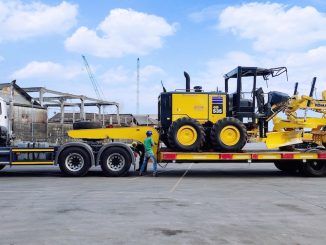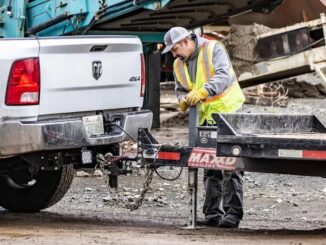
View the complete article here.
Pricing the products and services you offer can be challenging. In the hauling business, coming up with a competitive, but still profitable, freight rate for moving equipment and materials is particularly hard. In part because it’s a moving target; in part because it’s complex. In this article we discuss what goes into pricing freight rates.
What’s a Freight Rate?
A trucking freight rate is the amount per mile a broker or shipper will pay a carrier for hauling a load. Which makes it sounds oh so simple, doesn’t it? But there’s a lot of important information that goes into calculating a trucking freight rate. And you sure don’t want to shoot from the hip on this – your hauling business won’t last too long if you do.
Why it Matters
The freight rate a broker or shipper is willing to pay is not carved in stone. What they will pay today is not likely the same number they will pay tomorrow. So the freight rate for each hauling job is a negotiation. You always want to negotiate from a position of strength. Which means you need to understand what, specifically, goes into the freight rate calculation.
Freight Rate Calculation Simplified
We just told you the freight rate calculation is wicked complicated. But before we start explaining things, we believe describing the calculation in simple terms can help you understand things better as we break it down for you. It goes like this:
Fixed Costs + Variable Costs + Profit divided by Number of Miles = Per Mile Freight Rate.
Keep that in your head or write it down on a sticky note while we describe each part of the calculation.
Base Rate
The first thing you need to determine is your base rate. This is the minimum you need to charge to break even. It includes your fixed and variable business costs.

Fixed Costs
These are the things you pay every month whether you haul a million pounds – or zero pounds – of equipment and materials. Here are some examples of fixed costs:
- Equipment Leases
- Office Rent
- Insurance
- Bookkeeping and Accounting
- Permits and Licensing
Variable Costs
Your variable costs are – like duh – not fixed. These are items that may or may not be incurred, or the price changes based on need or market. For example, truck repairs. Here are some typical variable costs that impact your freight rate:
- Truck maintenance and repairs
- Taxes
- Driver Rates
Estimated Annual Hauling Miles
This number gets a bit tricky. If you’re new to the hauling business, it’s the estimated number of miles of hauling you believe you will book in the coming year. If you’ve been in business for a few years, you can take the average number of miles booked per year based on historical data. This is what you will use to determine the base rate per mile.
Base Rate Example
So, let’s say your fixed costs are $50,000 dollars per year. Variable costs are estimated at $50,000 per year. Historical data shows you book 100K miles per year. Let’s do the math:
50,000 + 50,000 = 100,000. Now divide $100,000 by 100,000 miles and you get $1 per mile. That’s your base rate before profit. You must make at least $1 a mile – and book at least 100,000 miles per year – to break even.

Profit Margin
Once you determine your base rate, you’ll multiply it by your preferred profit margin, then add the result to your base rate. Note we said “preferred” profit margin – because negotiating the hauling job may require you to reduce your profit margin. If your preferred profit margin is 20%, then:
$1 base rate x .20 = 20 cents. $1 + 20 cents = $1.20.
Freight Rate per Haul
You determine how many miles it is between Point A and Point B. Then multiply your base rate plus profit margin by the total miles. You now have your freight rate per mile. If the total miles for the haul job is 5,000 then your starting point is $1.20 x 5,000 = $6,000. We say “starting point” because there are other factors that will increase – or decrease – the price.
Other Factors
There are other factors that affect your freight rate calculation. These include available routes, driver availability, time of year, fuel costs, and the desirability of a particular origin or destination – known as a “lane.” Finally, some loads require more attention than others – the difference, say, between hauling highly flammable materials and a bunch of scrap metal. Like we told we up front, it does get complicated. For example, you may add a percentage to your base rate for hauling chemicals. Let’s say 10%. Your quote for hauling chemicals is $1.20 x .10 = .12. Now add the 12 cents to the freight rate of $1.20 and this job will have a starting rate of $1.32 per mile.
Freight Management Software
There are software solutions to help you calculate your freight rate and manage your hauling business. Some popular freight management software programs include:
Conclusion
Calculating freight rates for hauling equipment and materials can get complicated. Just remember that your base rate includes fixed and variable costs. You than add on a percentage for your profit. Finally, you make adjustments based on factors that make the haul more or less desirable – including the time of year, the specific origin and destination, and the level of service required to manage the load. There are freight management software programs available to help. One thing is simple: Your freight rate calculation must be both competitive and profitable.
View the complete article here.
How is the freight rate for hauling equipment and materials calculated?
The freight rate is determined by adding fixed costs, variable costs, and profit margins, then dividing by the number of miles.
What factors influence the complexity of calculating freight rates, and how can they be managed?
Factors like available routes, driver availability, time of year, fuel costs, and load specifics impact freight rates; managing these requires adjusting the base rate and using software solutions for accurate calculations.












































